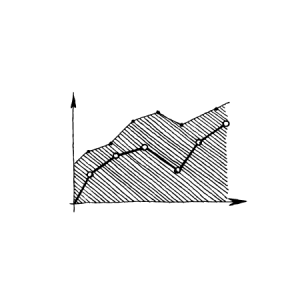When Ray Johnson moved to California to try to make it in the wine industry in the mid- 1980s, everything was different.
“When I was a young lad moving out from Pittsburgh, I think you could just say with a smile, ‘Hey I want this job, give me a break.’ But now there are so many people who want these jobs in the north coast of California,” says Johnson, who now directs Sonoma State University’s Wine Business Institute.
“You can have a great marketing and finance background and be working in San Francisco, but there will still be a line of 20 people in front of you.”
That’s one of the reasons that Sonoma started its Wine Business Institute, which offers a range of wine-related business education programs. In 2008, the institute launched the country’s first and only MBA specializing in wine, which attracts students who want to parlay their interest in the world of Riesling, Chardonnay and Merlot into a business career. Besides this part-time program, the school also offers an EMBA program, which started in 2012, and an undergraduate program, and it’s planning to roll out a full-time global program next year, catering to foreign students who cannot attend part-time programs due to visa requirements.

Although Sonoma is the only school in the United States that offers a wine MBA program, several schools in Europe offer these programs, including the Bologna Business School in Italy, INSEEC Wine and Spirits Institute in Bordeaux and Kedge Business School, also in Bordeaux.
These programs sprang up in the past ten years in response to the shifting nature of the world of wine—a world that produces a $180 billion annual retail turnover. Wine is a burgeoning international industry, with one out of four bottles consumed starting out either as imports or exports. It’s concentrated on a small geographical location, at least in the United States, but it’s also an incredibly fragmented market, creating plenty of opportunities for MBA students to combine a knowledge of grapes with business savoir-faire.
“The most important wine brand in the world is only representing two percent of this global market,” says Jean-François Ley, Director of the INSEEC Wine and Spirits Institute. “It’s a really fragmented market, with small markets and small brands, with clear need of branding and marketing strategies.”
Another trend buoying the wine industry is an increased interest in sustainable foods and food and drink sourcing.
“It’s a sustainable industry in terms of that people will continue eating over time,” says Elisa Montaguti, MBA director at Bologna Business School. “We see people paying much more attention to what they eat, by the minute. This gives opportunities.”
Wine in America is a fragmented market as well, although the industry in the States is centered on the triangle between Napa, Sonoma and San Francisco in northern California. Johnson says the program first launched because a group of wine industry leaders were concerned about whether their heirs had the know-how to keep their businesses afloat.
“It’s a business that attracts people that are very passionate, and they have to make sure and want to make sure that the next generation has the skills to run it the right way,” Johnson says.

But besides attracting heirs, Sonoma’s program also attracts other industry professionals, many of whom already work in the wine industry. These professionals are interested in increasing their knowledge of the world of wine and making themselves more appealing candidates in a competitive industry. The program attracts students who work at wineries, wine companies and as sommeliers. It attracts entrepreneurs looking to start their own wine businesses and students with a taste for analytics who want to help wineries keep their heads above water.
All of these programs emphasize that wine is about far more than smelling and sipping. For example, in Bologna Business School’s Food and Wine MBA, students learn about distribution, branding, creativity and entrepreneurship. And Montaguti says the most important topic her program covers is the history of the wine industry.
Indeed, the business of wine is more than just swirling and sniffing.
“The industry always asks, what do you know about wine? Not just can you taste wine, but do you have a far perspective?” Sonoma’s Johnson says. “You need to figure out how to manage it, or you will go out of business.”
Chloe Ashton, a former student in INSEEC’s Wine Marketing and Management MBA, says that during her program, she delved into the intricacies of specializing, marketing and managing wine, and learned the ins and outs of the industry from visiting lecturers from French supermarkets and high-end spirits companies such as Grey Goose. She is currently working as a manager at a wine broker in the United Kingdom.
Ley says about a third of his students go on to work in distribution, at supermarkets or wine-selling chains, a third go on to work in marketing and communication for specialized agencies, and another third work at wineries or for wine merchants.
He says the most important industry trend his students should learn is that wine should be taken seriously.
“The main trend is that most people don’t know that wine is not only a question of culture or pleasure. It’s also business,” Ley says. “This is what we are trying to teach to our students.”

Photo credits:
- "Bar Wines" by Alex Brown / Flickr (cropped and rotated)
- "Wine Bottles" by Jeff Kubina / Flickr
- "Robert Young Vineyards, Alexander Valley, Sonoma County, California, USA" by John / Creative Commons (cropped)
- "Red wine closeup in glass" by Quinn Dombrowski / Creative Commons










